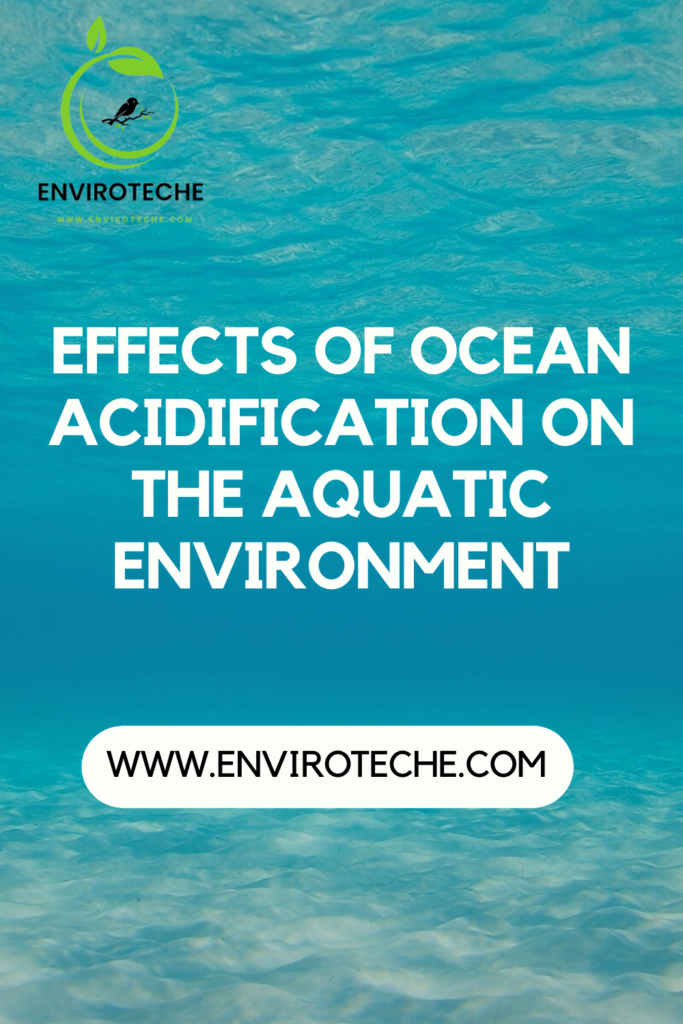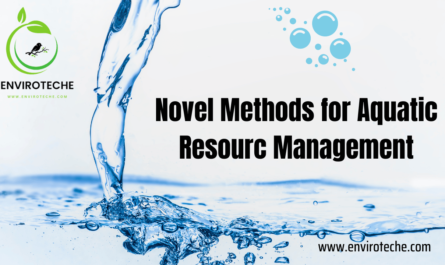
Laiba Ali1
1Department of Soil and Environmental Sciences, University of Agriculture Faisalabad
Ocean Acidification
Ocean acidification is the term used to describe the gradual decrease in the ocean’s pH over time. It is mostly due to the ocean’s absorption of CO2 from the atmosphere, though it can also be brought on by other substances.5 The Ocean becomes more acidic as a result of carbon dioxide dissolving in it, which is now widely acknowledged as one of the major forces driving change in biological systems.3
Significance of the Literary Knowledge about Coastal Acidification
Ocean acidification is a serious effect of rising greenhouse gas CO2 levels in the atmosphere resulting in a decline in seawater pH and an upsurge in acidity levels. Coral reefs experience slower growth and are more susceptible to bleaching. Shell-forming creatures struggle to maintain their shells, which hinders their ability to survive and reproduce. These indicators show the significant effects of ocean acidification on the aquatic environment. Moreover, fishes encounter difficulties with development, behavior, and reproductive process. It is important to address the implications of sea acidification for the biodiversity to be maintained, and the marine ecosystems to be protected.
In this blog, we will examine the causes and effects of acidification on marine organisms.
Carbon dioxide CO2 absorption from the atmosphere into the ocean is the main source of ocean acidification. Ocean acidification’s primary causes include:
Rising CO2 Levels in the Atmosphere
Human activities, especially the combustion of fossil fuels like coal, oil, and natural gas, emit a considerable quantity of CO2 into the atmosphere. Increased CO2 levels
and rising sea surface temperatures will cause more frequent and severe coral bleaching events.1
Climatic changes
Marine acidification may become more severe due to rising global temperatures causing climate change. A greater amount of CO2 is absorbed into the ocean by warmer waters because they have less dissolved CO2 in them.
Deforestation
Ocean acidification always induces deforestation, particularly in coastal areas. In taking CO2 out of the atmosphere, forests function as carbon sinks. Deforestation decreases the ability of terrestrial ecosystems to absorb CO2, which raises atmospheric CO2 levels and accelerates ocean acidification. Therefore, it is believed that coastal acidification is a result of rising atmospheric CO2, which again expedites the burning of fossil fuels and deforestation.4
Ocean acidification’s effects are as under:
Inhibited Growth of Coral Reefs
One of the significant effects of ocean acidification is the inhibition of coral reef formation. Coral polyps, which create calcium carbonate skeletons, accumulate and expand to form coral reefs, which are intricate ecosystems. However, in an acidic environment, coral growth rates are slowed, which prevents coral reef development.
Decreased calcification
Ocean acidification makes it harder for corals to create the calcium carbonate skeletons that protect them, which slows their growth and weakens their structures.
Coral discoloring
When other stressors, such as rising ocean temperatures, are added, such as acidic conditions, corals are more susceptible to bleaching incidents. If conditions do not change, corals will eventually perish as a result of the expulsion of their symbiotic algae, which causes bleaching.
Habitat destruction
Coral structures that are weakened and eroded as a result of acidification contribute to the loss of vital habitat for a wide variety of marine organisms.
Ocean acidification imperils coral reefs by reducing the quantity of carbonate ions needed for the construction of their skeletons.6
Shell-Developing Organisms
Mollusks, shellfish, and other marine invertebrates that produce shells are particularly susceptible to the effects of ocean acidification. These animals suffer a variety of negative consequences as a result of the increased acidity of saltwater, which interferes with their capacity to build and maintain their shells.
Degradation of shells
Acidic waters diminish the availability of carbonate ions required for shell development. Mollusks, shellfish, and other species have trouble building and maintaining their shells, which affects their ability to survive and reproduce.
Reduced populations
The food chain can be upset and predator-prey interactions impacted by declining numbers of shell-forming species.
Phytoplankton Reduced Production
Variations in the ocean’s chemical makeup driven by acidification can impair phytoplankton growth and production, which is the base of the marine food web. Decreased phytoplankton abundance may negatively impact trophic levels and overall ecosystem productivity.
Some phytoplankton species may be more vulnerable to acidification, causing changes in community composition and possible ecosystem imbalances.
Fishes and Other Marine Creatures
Fish and other marine species suffer as a result of ocean acidification. Acidic environments can hinder their development, change their behavior, and prevent them from successfully reproducing.
Development and reproduction problems
The growth, size, and survival rates of fish and other marine animals can all be impacted by acidic environments. Under acidic conditions, some fish species have altered behaviors, such as a decreased ability to move, find food, or evade predators. Acidification can interfere with the ability of marine organisms to reproduce, impacting fertility, population dynamics, and larval development.2
The way out of the issue of oceanic acidification
Ocean acidification must be addressed, and this calls for global cooperation. Below are some important measures to reduce ocean acidification.
Reducing CO2 Emissions
In order to slow down climate change and ocean acidification, CO2 emissions must be reduced. This can be done by switching to renewable energy sources and encouraging energy-saving practices in buildings, transportation, and business operations.
Clean energy strategy
It is possible to drastically lower CO2 emissions by moving away from fossil fuels and encouraging the use of renewable energy sources, such as solar, wind, and hydro-power. Improvements in energy efficiency and the move to cleaner energy sources are required.
Carbon capture and storage (CCS) technique
These CCS technologies can stop CO2 emissions from factories and power plants from entering the atmosphere and being absorbed by the oceans.
Sustainable Land and Coastal Management
Ocean acidification mitigation depends on sustainable land and coastal management. Human activities have a negative impact on marine ecosystems. It entails techniques like ethical farming, restoring coastal ecosystems, conserving soil, sustainable coastal development, and integrated coastal zone management. By putting these strategies into practice, we may lessen nutrient runoff, protect important habitats, and reduce pollutant inputs, ultimately enhancing the resilience and health of coastal and marine ecosystems.
Conserving vegetation
The vegetation conservation along the coast is an important component. By preserving and restoring coastal ecosystems like mangroves, salt marshes, and seagrass beds, we can increase our ability to store carbon and mitigate the effects of acidification.
Limiting Nutrient Outflow
Using better agricultural methods, such as precision farming, appropriate fertilization, and minimal chemical use, can help prevent nutrient runoff and the ensuing algal blooms, which trigger acidification.
Effective Ocean Conservation
The health and richness of marine ecosystems depend on effective ocean conservation. It entails putting policies in place including creating marine protected areas, encouraging sustainable fishing methods, lowering pollutant inputs, and addressing the effects of climate change.
Creating Marine Protected Areas
It can help conserve delicate marine ecosystems and increase their resistance to acidification. It can be designated and wisely managed.
Monitoring Overfishing
Putting limits on capture, implementing gear restrictions, and protecting crucial spawning grounds are examples of science-based fisheries management practices that can help prevent overfishing and maintain healthy fish populations, which can increase ecosystem resilience.
Policy Efforts and Mass Training
Governments are essential in establishing and upholding laws that support sustainable ocean management. Sustainable fishing methods, preventing marine pollution, and the preservation of marine environments can all be the subjects of training programs. This gives people the ability to take initiative and decide for themselves, which helps to safeguard the ocean.
Spreading knowledge
By informing the general public, decision-makers, and other interested scientific parties regarding the causes and effects of ocean acidification, it is possible to promote a sense of community and mobilize support for necessary action.
Global agreements and regulations
Ocean acidification is capable of being mitigated by promoting global collaboration and putting CO2 emission reduction measures into practice, like the Paris Agreement.
Conclusion
In conclusion, ocean acidification poses significant challenges to aquatic ecosystems, causing decreased pH, coral reefs’ growth, and other marine creatures. This leads to trophic disturbances, biodiversity loss, and increased susceptibility to bleaching and habitat loss. The ocean’s ability to function as a carbon sink is also diminished, exacerbated by climate change. Collective efforts, such as reducing CO2 emissions and promoting cleaner energy, are needed to combat the effects of ocean acidification. Increased public awareness and international cooperation are necessary to protect marine ecosystems, maintain biodiversity, and protect resources for future generations.
Frequently Asked Questions
Q 1. How does ocean acidification affect aquatic life?
Ans. Aquatic life is impacted by ocean acidification because it interferes with the growth and survival of creatures like corals, shellfish, and mollusks by preventing the creation of their shells and skeletons.
Q 2. How can humans slow the process of ocean acidification?
Ans. Humans can delay the process of ocean acidification, by lowering carbon dioxide emissions and switching to renewable energy sources.
Q 3. How do coral reefs respond to ocean acidification?
Ans. Since carbonate ions are necessary for the production of the coral skeleton, ocean acidification prevents coral reefs from growing.
Q 4. Can the acidification of the oceans be stopped?
Ans. Ocean acidification is a gradual process that cannot be stopped instantly.
Q 5. Do any natural processes exist that can lessen the effects of ocean acidification?
Ans. The effects of ocean acidification can be somewhat masked by some natural processes, such as the mineralization of calcium carbonate and the creation of bicarbonate ions by marine organisms.
References
- Anthony, K.R., Kline, D.I., Diaz-Pulido, G., Dove, S. and Hoegh-Guldberg, O., 2008. Ocean acidification causes bleaching and productivity loss in coral reef builders. Proceedings of the National Academy of Sciences, 105(45), pp.17442-17446.
- Caldeira, K. and Wickett, M.E., 2003. Anthropogenic carbon and ocean pH. Nature, 425(6956), pp.365-365.
- Fabry, V.J., Seibel, B.A., Feely, R.A. and Orr, J.C., 2008. Impacts of ocean acidification on marine fauna and ecosystem processes. ICES Journal of Marine Science, 65(3), pp.414-432.
- Fenchel, T., 2011. Ocean acidification.
- Gattuso, J.P. and Hansson, L. eds., 2011. Ocean acidification. Oxford university press.
- Mollica, N.R., Guo, W., Cohen, A.L., Huang, K.F., Foster, G.L., Donald, H.K. and Solow, A.R., 2018. Ocean acidification affects coral growth by reducing skeletal density. Proceedings of the National Academy of Sciences, 115(8), pp.1754-1759.
Check Other Schlorships:

